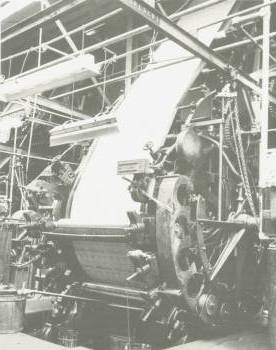![]()
|
Calico is a plain cotton fabric which originally came from Calicut in India. |
|
This new fabric threatened the existing woollen industry in Britain and in 1712 an excise duty of 3d per yard on printed calico was imposed. In 1721 the wearing of printed calicoes was actually prohibited! This law was repealed in 1774 but duties were not abolished until 1831. |
|
Printing of fustian (a coarse cotton/linen cloth) had still been permitted through the eighteenth century and much of the British fustian industry was based in Lancashire, where businesses developed skills in textile printing. |
|
Calico printing was at first performed manually by pressing carved wooden blocks, dipped in ink, onto the fabric, but in 1785 machine printing using engraved copper rollers was introduced.  A Mather and Platt calico printing machine. |